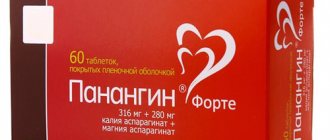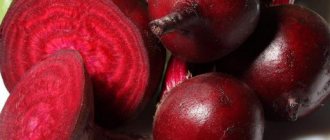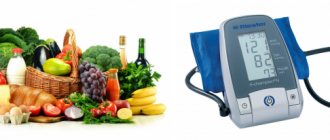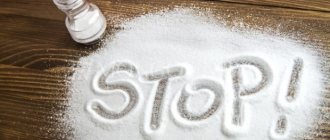Increased platelets
An increase in platelets compared to the norm (thrombocytosis) in the blood can be relative, when the volume of fluid in the body decreases due to dehydration, or absolute. In absolute thrombocytosis, PLT increases due to accelerated synthesis of these cells in the bone marrow.
To treat a relative increase in PLT, the use of drugs that lower blood viscosity, traditional methods of treatment, adherence to a drinking regime and a proper diet may be sufficient.
Absolute thrombocytosis is caused by a benign disease - anemia, bleeding, infection, or a malignant disease - lymphoma, leukemia, myelofibrosis.
It is possible to reduce platelets in absolute thrombocytosis only by eliminating the cause of the increase in the number of platelets in the blood. To do this, you will need to undergo an examination to diagnose the disease that caused the elevated platelets.
Causes and signs of increased levels
Both insufficient and excessive numbers of platelets can cause nosebleeds and blood in the feces. Low platelet levels in the blood of women are manifested, for example, by heavy periods. As the number of platelets increases, the blood becomes too viscous, which leads to the formation of blood clots in different places. The following signs indicate thrombocytosis:
- enlarged spleen;
- frequent headaches;
- pain in the abdomen due to internal bleeding.
Blood clots in arteries and veins lead to ischemia due to decreased blood supply to an area of the body. Sometimes this manifests itself as aching in the tips of the fingers of the upper extremities and itching.
Impairments in renal function and central nervous system function may occur.
The number of platelets in the blood increases for the following reasons:
- inflammatory diseases;
- blood pathologies;
- the presence of infections caused by viruses, fungi, parasites;
- disruptions in the gastrointestinal tract and liver;
- splenectomy;
- oncological diseases.
Injuries with heavy blood loss also lead to thrombocytosis. Any surgical intervention, alcohol abuse, excessive salt consumption, iron deficiency are also reasons for an increase in the level of platelets in the blood plasma.
Important information: Decoding the leukocyte blood count in children (normal values in the table)
An increase in platelets is often observed in pregnant women. The reasons for this phenomenon are the same, but may additionally affect:
- Antiphospholipid syndrome, which often occurs during pregnancy and continues after childbirth.
- Dehydration that occurs due to frequent vomiting.
A slight increase in platelet count during pregnancy is normal. Large growth can cause miscarriage.
In children, thrombocytosis manifests itself with the following symptoms:
- bleeding from the gums and nose;
- dizziness and weakness;
- the appearance of bruises from the slightest injury;
- constantly cold extremities;
- increased heart rate and blood pressure;
- numbness of the upper and lower extremities.
Laboratory tests and regular pediatric examinations will help identify pathology.
Treatment of thrombocytosis
To reduce the number of platelets in the blood, medications are prescribed such as:
- Clopidogrel;
- Anagrelide;
- Aspirin;
- Thrombo ACC;
- Interferon alpha;
- Argatroban;
- Warfarin;
- Trental.
The simplest and most popular medicine that helps reduce platelets is aspirin. But this drug has many side effects, and, in addition, it should not be prescribed to children without the supervision and recommendation of a doctor.
Not only aspirin, but any of the listed drugs are taken only as prescribed by a doctor. Uncontrolled use of drugs that lower platelets and promote blood thinning increases the risk of bleeding. Internal hemorrhages in the brain, stomach, and intestines are especially dangerous.
If there are contraindications to taking medications, the doctor may prescribe a plateletpheresis procedure. The essence of this blood purification method is to remove part of the platelets from the bloodstream, which is done by passing the blood through a blood cell separator.
Thrombocytopenia
This is a painful condition during which the level of platelets in the blood falls below normal (less than 150,000 per 1 milliliter of blood). Due to this decrease, bleeding increases and there may be serious problems stopping bleeding.
Causes and forms of thrombocytopenia
Thrombocytopenia can be congenital or acquired. The most common form of the disease is the acquired form.
The acquired form of the disease comes in different types, which are distinguished depending on the causes of occurrence. Thus, thrombocytopenia can be:
- immune (the most common type, in which antibodies pass from a pregnant woman to her fetus);
- formed when cells located in the bone marrow are inhibited;
- consumption thrombocytopenia, which occurs in the presence of thrombosis and due to extensive hemorrhages;
- thrombocytopenia resulting from the transformation of bone marrow into a tumor;
- a decrease in the level of blood clots, which occurs due to mechanical damage to platelets that occurs with hemangioma.
The hereditary form includes diseases with abnormal damage (defects) to platelet membranes, which cause disturbances in their functioning.
The main factors contributing to the development of thrombocytopenia are: allergies to drugs (allergic or drug thrombocytopenia), infections and intoxications of the body provoke the development of symptomatic thrombocytopenia (causes of development include HIV, herpes, hepatitis, infectious mononucleosis, influenza, acute respiratory infections, rubella, chickenpox , systemic lupus). Additionally, Gaucher disease can cause low platelet levels.
There is also an idiopathic type of this disease. In this case, the cause of thrombocytopenia cannot be identified.
Symptoms of thrombocytopenia
The main signs of this problem are bleeding gums, constant and heavy bleeding from the nose, the appearance of bruises on the body and limbs for no apparent reason, difficult to stop bleeding after tooth extraction or with minor damage to the skin, blood streaks in the discharge, when urinating or defecation, heavy bleeding in women during menstruation, rash on the body and legs (the rash appears in the form of small red dots).
Also, hemorrhages may appear on the face and lips. This may indicate a cerebral hemorrhage.
For thrombocytopenia, no specific diets have been developed. You need to eat right, that is, the body must receive the right amount of proteins, carbohydrates, fats and all macro- and microelements, vitamins. For anemia, it is useful to eat foods containing iron (buckwheat, nuts, corn, beef liver, barley porridge, oatmeal, peas, dogwood, sprouted wheat).
If there is a risk of hemorrhages in the stomach or intestines, you need to follow a gentle diet and do not eat or drink excessively hot and spicy foods.
It is useful to drink freshly squeezed juice from raspberries, strawberries, wild strawberries, apples, beets, cabbage leaves and black radish.
If you suffer from bleeding gums, then you need to eat currants, drink teas from the branches and leaves of currants and blackberries.
Folk remedies for reducing platelets
Folk remedies that are used both as medicine and in the form of food and drinks in the daily diet will help reduce the number of platelets in the blood.
To reduce platelets, traditional medicine recipes use ginkgo biloba, ginger, cinquefoil, mulberry roots, peony, celery, meadowsweet, chestnut, galega officinalis, ginseng, sweet clover, willow bark, birch buds, etc.
Recipe 1
Boil the grape juice so that only a third of the original volume remains in the bowl. You will need to drink 1 glass of this drink per day.
Recipe 2
- Place 50 g of ginkgo biloba leaves in a glass jar and add 0.5 liters of vodka;
- Infuse for 2 weeks;
- drink a teaspoon before meals for a month.
Recipe 3
- 50 g of mulberry horse is infused with 1 liter of cold water for an hour;
- bring to a boil and simmer over low heat for 15 minutes;
- drink one glass 3 times a day for 5 days;
- are treated with 2–3 courses, taking a break of 3 days between them.
Recipe 4
- Two heads of crushed garlic are infused with 200 ml of vodka for two weeks in the dark;
- drink a teaspoon before meals.
To reduce platelets, doctors recommend increasing the daily volume of fluid, but in pregnant women this can cause swelling. Chestnut flowers, which are used both as a tincture and as a juice as a folk remedy, can help lower platelets in a woman’s blood so that swelling does not occur.
Chestnut flower tincture
- Pour 50 g of flowers into 0.5 liters of vodka in a glass jar;
- leave for 3 weeks in the dark;
- drink the tincture 3 times a day before meals.
Chestnut flower juice
- Grind the flowers (you can grind them in a meat grinder), squeeze out the juice;
- drink 30 drops 3 times a day;
- Store in the refrigerator for no longer than 2 days.
What not to do if you have elevated platelets
Folk remedies, like any medicine, can have side effects. If you have a tendency to have high platelets in the blood, you cannot constantly use herbs such as valerian, knotweed, yarrow, St. John's wort, corn silk, and nettle.
If you are prone to high blood platelet counts, herbs with a diuretic effect should be used with caution, as they promote the removal of fluid, which causes the blood to thicken. Many herbs have a diuretic effect to a greater or lesser extent, and it is dangerous to use any herbal raw materials without the supervision of a doctor.
Diet features
If you are prone to high platelet counts in the blood, the diet should be balanced with foods that form uric acid in the body. This compound at elevated concentrations can damage the endothelium of blood vessels and promote platelet aggregation.
High levels of uric acid are observed in obesity, diabetes, and atherosclerosis. This means that in order to lower platelets, you need to monitor your weight.
Uric acid is formed during the breakdown of purine bases, which are most found in the DNA and RNA of cells of actively working organs - muscles, brain, liver, and tissues of young animals - veal, lamb meat. It is advisable to exclude these products from the diet or reduce their consumption.
To reduce platelets, thyroid hormone levels are monitored. If its condition is disturbed, foods containing iodine are additionally introduced into the diet - seafood, seaweed. There must also be foods on the table that contain omega-3 fatty acids - herring, shellfish, tuna.
It will be possible to reduce platelets if you introduce onions in any form into your diet. Among the spices that are suitable for reducing platelets are cloves, cinnamon, hot red pepper, cumin, turmeric, oregano, and mint.
Chinese black (wood) mushrooms have the ability to normalize platelets during thrombocytosis. They are boiled and added to soups, salads, and cooked with onions and sour cream. It is useful to use olive, linseed, and rapeseed oil both for dressing salads and for frying.
To lower platelets, you need to eat sunflower seeds, cocoa, dark chocolate, lemons, oatmeal, and tomatoes more often. Cherries, raspberries, blackberries, strawberries, blueberries, and sea buckthorn will help lower platelets.
The diet should include vegetables containing salicylates, such as cucumbers, zucchini, and radishes. To reduce platelets, it is sometimes useful to eat mushrooms, black radishes, bell peppers, tomatoes, and green beans.
What to drink if you have high platelets
It is believed that if platelets are high, it is better to start the day not with coffee, but with a cup of black or green tea. Although, in relation to coffee, it has been established that this product has an antithrombic effect due to the presence of phenolic acids in it.
This means that coffee lovers can still drink their favorite drink at high PLT values without the risk of deteriorating health. An antithrombic effect was also found in decaffeinated coffee.
A great way to lower platelets and start a new day is to finish your breakfast with a cup of sugar-free cocoa.
It is useful to brew ginger against high platelets. It is better to drink an infusion of grated ginger in the evening or during the day. Ginger is also useful as an additive to salads, first and second courses.
It will be possible to reduce platelets if you drink cranberry, lingonberry juice, eat an apple or some grapes during the day.
What not to do if you have high platelets
You should avoid eating smoked meats, jelly and rich broths, buckwheat porridge, bananas, lentils, chokeberries, and mangoes. It is advisable to exclude white bread and sweet pastries from the menu, or, if you cannot completely remove them from the diet, at least reduce their consumption.
You need to exclude carbonated drinks and alcohol in any form from your diet. As an exception, red wine is sometimes allowed.
How to reduce platelets in the blood
Thrombocytosis is diagnosed when the level of platelets in the blood is significantly elevated over a long period of time.
Daily changes in the number of blood platelets are possible due to excessive physical exertion, impaired drinking habits and other factors, which is not a disease and does not require treatment.
How to lower platelets in the blood in the presence of pathological changes in the body is decided by a hematologist, taking into account concomitant diseases and the individual health characteristics of the patient.
If thrombocytosis is caused by a disease, medication, or other factors, then therapy should primarily be aimed at eliminating the underlying cause with concomitant normalization of platelet levels.
The presence of malignant or benign tumors in the hematopoietic system usually leads to disruption of the functioning of bone marrow stem cells, which provokes thrombocytosis. In this case, it is also necessary to identify the cause of the disease with further prescription of a treatment regimen.
As a rule, a slight increase in the level of platelets in the blood can be corrected with the help of a special diet and folk remedies; in severe cases, drug therapy or the use of plateletpheresis is required.
Drug treatment
If the body has elevated levels of platelets in the blood, it is advisable to prescribe:
- Anticoagulants (Aspirin, Fraxiparin, Flagmina, Warfarin). Drugs in this group inhibit the activity of the blood coagulation system, which prevents thrombus formation.
- Antiplatelet agents (Pantoxifylline, Curantyl, Thrombo ACC, Clopidogrel, Ticlopidine), which slow down platelet aggregation, which reduces the risk of blood clots.
- Immunostimulants (Interferon) to maintain the body's defenses.
Self-treatment of thrombocytosis is not allowed. Inappropriate therapy can lead to serious consequences, including internal hemorrhage
You can also reduce platelets in the blood using the following medications:
- Anagrelide is a specific drug that helps reduce the level of blood platelets in the blood, which prevents the formation of blood clots;
- Trental, Pentoxifylline, which reduce blood viscosity and reduce the adhesion of platelets to each other. In addition, the drugs improve blood microcirculation and cellular respiration;
- Hydroxyurea is a drug that is prescribed for pathologies, including malignant ones, of the bone marrow, which indirectly affects the level of platelets;
- Xanthinol nicotinate is a vasodilator that improves blood circulation and normalizes redox processes.
The dosage of each drug is determined by a specialist in accordance with the instructions for its use.
Caution should be exercised when using certain diuretics, contraceptives and hormonal drugs that increase blood viscosity.
Thrombocytopheresis
If drug therapy is ineffective, a significant decrease in platelet levels can be achieved using thrombocytopheresis.
The entire process is carried out using a special apparatus in which the patient’s blood is separated and platelets are isolated.
Purification of blood from excess platelets by thrombocytopheresis lasts for 2–3 hours
During the procedure:
We recommend you read: platelets in the blood are normal
- The patient can sit or lie down, as long as it is most comfortable for him. Next, the hand is fixed.
- A sterile needle is inserted into the patient’s vein, located at the end of a special tube (catheter), the other end of which is connected to special equipment.
- A similar tube is connected to the second arm.
- Blood flows through a catheter from a vein in one arm to the equipment where platelets are removed.
- Through a catheter on the other arm, blood cleared of blood platelets is returned to the body.
- At the end of the procedure, bandages are applied to the puncture site.
The manipulation equipment is equipped with computer control and a monitor, which allows you to monitor the entire process in detail, change its duration and speed, and also monitor the patient’s condition.
After plateletpheresis, the patient may feel drowsiness, dizziness, fatigue and weakness for several days.
In general, the procedure is carried out in medical institutions. It is absolutely sterile and gives good results, but should be prescribed and performed only by a doctor.
Nutrition
Considering that a lack of fluid intake provokes an increase in the number of blood platelets in the body, pure water (except soda), consumed daily in an amount of 1.5 to 2 liters along with natural compotes, juices, fruit drinks, green tea, herbal decoctions and infusions, helps cope with thrombocytosis.
Compliance with the drinking regime is one of the most important factors for reducing the level of anucleate cells in the blood
The consumption of bananas, mangoes, rowan berries and lentils is not recommended.
You can reduce the level of blood platelets using the following products:
- Garlic, which improves the body's defenses and prevents bacteria and viruses from entering the body. In addition, the content of allicin essential oil in the spicy vegetable leads to a decrease in the production of blood platelets in the bone marrow. It should be noted that heat treatment of garlic is undesirable due to the loss of all beneficial properties. The cloves of the plant should be added to food so as not to harm the gastric mucosa and not provoke diarrhea.
- Grenade. The presence of polyphenols in fruits reduces platelet production and prevents thrombosis.
- Pomegranate can be consumed fresh or as juice.
- Seafood. A large amount of vital fatty acids (omega - 3) in salmon, tuna, scallops, sardines, and shellfish leads to a decrease in the activity of anucleate cells and a decrease in the likelihood of blood clots. Fish dishes can be replaced with fish oil (3-4 g daily).
- Red wine. Excessive production of platelets and, as a result, a decrease in their number is prevented by the flavonoids found in the drink. Despite the ban on alcohol consumption, a small dose of red wine only brings benefits.
- Products containing salicylates. Including mushrooms and berries (sea buckthorn, currants, raspberries), raisins and vegetables (cucumbers, zucchini, radishes), fruits (oranges, cherries) in the diet will reduce blood viscosity and prevent the formation of blood clots.
- Cinnamon, which helps reduce platelet aggregation and reduces blood clotting due to the presence of cinnamaldehyde. Cinnamon, in addition to its positive effect on blood cells, will add flavor to baked goods and stewed vegetables, tea or mulled wine.
- Coffee. The drink has an antithrombotic effect due to phenolic acids rather than caffeine. Therefore, drinking decaffeinated coffee will lead to an identical result.
- Beetroot. Grated raw root vegetables with sugar will be useful not only for adults, but also for children.
If platelets are elevated, you should avoid fried, spicy, fatty foods, as well as alcohol, which promotes blood clots.
In addition to alcoholic beverages, you should also get rid of nicotine addiction, which also negatively affects the process of hematopoiesis.
Traditional treatment methods
The use of leeches for medical purposes is advisable to reduce blood viscosity, improve microcirculation, prevent the formation of blood clots and strengthen blood vessels.
Hirudotherapy is one of the oldest techniques that allows you to get rid of many diseases.
In addition, hirudotherapy has the following effects:
- antihypoxic,
- bacteriostatic
- analgesic;
- immunostimulating,
- antioxidant.
The hirudotherapy procedure has contraindications and must be carried out by a specialist under the supervision of the attending physician.
Folk remedies used as monotherapy can reduce blood viscosity and normalize the number of blood platelets with a slight increase in their level. In severe cases, its use along with other means of treatment is not excluded.
The following recipes are recommended:
- Chopped nettle (1 tablespoon of dried leaves) is poured with boiling water (200 ml) and boiled for 10 minutes. As soon as the broth has cooled, it is ready to drink, a third of a glass before meals.
- Sesame oil, which should be consumed in a dosage of 15 ml after meals, and also added to salads and cereals.
- Sweet clover (1 tsp) is poured with boiling water (1 tbsp), wrapped in a towel and infused for 30 minutes. Used 3-4 times throughout the day. The course of treatment is 30 days.
- Peeled, slightly crushed garlic (2 pieces) is poured with vodka (200 g) and stored in the dark for 30 days, then filtered. Take ½ tsp. twice a day until the product is completely used.
An increase in the level of platelets in the blood can lead to blood clots and disruption of blood microcirculation. The occurrence of strokes, heart attacks and gastrointestinal bleeding is possible.
Despite the abundant amount of information about normalizing the hematopoiesis process, how to lower platelets in the blood is decided only by a specialist who should be contacted at the first symptoms of the disease.
Source: https://icvtormet.ru/krov/kak-snizit-trombocity
Prevention
Preventive measures for increased susceptibility to thrombocytosis include:
- rational drinking regimen at the rate of 30 ml of water per 1 kg of weight;
- medical control;
- dieting.
It is necessary to give up bad habits and try to reduce the amount of salt and fat in the diet. Women who are prone to elevated platelets should stop using hormonal contraceptives.
To improve the condition of blood vessels, you need exercise, walks in the fresh air and positive emotions. It is advisable, especially for women during pregnancy, to exclude stressful situations from their lives, since the release of adrenaline into the blood during troubles at home or at work helps to increase platelet levels.











